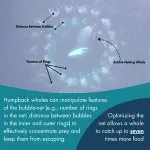(Press-News.org) While the U.S. federal government has clean energy targets, they are not binding. Most economically developed countries have mandatory policies designed to bolster renewable electricity production. Because the U.S. lacks an enforceable federal mandate for renewable electricity, individual states are left to develop their own regulations.
Marilyn Brown, Regents’ and Brook Byers Professor of Sustainable Systems in Georgia Tech’s School of Public Policy; Shan Zhou, an assistant professor at Purdue University and Georgia Tech Ph.D. alumna; and Barry Solomon, a professor emeritus of environmental policy at Michigan Technological University, investigated how clean electricity policies affect not only the states that adopt them, but neighboring states as well. Using data-driven comparisons, the researchers found that the impact of these subnational clean energy policies is far greater — and more nuanced — than previously known.
Their research was recently published in the journal Proceedings of the National Academy of Sciences.
“Analysts are asking if the U.S. should have a federal renewable mandate to put the whole country on the same page, or if individual state policies are sufficient,” Brown said. “To answer that question, it is useful to know if states with renewable energy policies are influencing those without them.”
Brown, Solomon, and Zhou examined a common clean energy policy tool: the Renewable Portfolio Standard (RPS). Adopted by more than half of U.S. states, RPSs are regulations requiring a state’s utility providers to generate a certain percentage of their electricity from renewable resources, such as wind or solar. Many of these standards are mandatory, with utility companies facing fines if they fail to reach targets within a given time.
To investigate the influence of these policies across state lines, the researchers first created a dataset that included 31 years (1991-2021) of annual renewable electricity generation data for 48 U.S. states and the District of Columbia. They then used the dataset to generate pairs of states linking each state to its geographic neighbors or electricity trading partners, allowing them to examine the influence of the RPS policy adopted by one of the pair on the renewable energy generation of the other — a total of 1,519 paired comparisons.
“By only looking at the pairs, we can see if an RPS in one state directly affects renewable electricity generation in another state, and, if that’s the case, whether it is because they are geographic neighbors or if it’s because they are participating in the same wholesale electricity market,” Zhou said.
Looking into the electricity market is important, because states often purchase electricity from other states through wholesale markets rather than exclusively producing their own power, and the purchased power can be generated from renewables. Utilities in some states may be allowed to meet their own RPS requirements by purchasing renewable energy credits based on the renewable electricity generated in other states.
In their analyses, the team also considered the concept of “policy stringency.” A stringency measure evaluates a state’s renewable electricity targets relative to the amount currently produced in the state. For example, if a state requires electric utilities to generate 30% of their electricity from renewable sources by 2030 and the state already has 25%, it isn’t a very stringent policy. On the other hand, if a state has a 30% target and only uses 10% renewables currently, it has a more ambitious and stringent RPS.
Though policy experts have used the metric in related work for over a decade, the research team improved the design.
“Our stringency variable includes interim targets as well as the existing share of renewable energy generation,” Solomon said.
The team found that the amount of renewable electricity generation in a state is not only influenced by whether that state has its own RPS, but also by the RPS policies of neighboring states.
“We also learned that the stronger a neighboring state’s RPS policy is, the more likely a given state is to generate more renewable electricity,” Brown said. “It’s all a very interactive web with many co-benefits.”
The authors were surprised to find that a given state’s electricity trading partners did not hold the most influence over renewable generation, but rather the geographical proximity to RPS states. They suggest that past RPS policy research focusing on within-state impacts likely underestimated an RPS’s full impact. While the researchers have not yet identified all factors that can cause spillover effects, they plan to investigate this further.
“The spillover effect is very significant and should not be overlooked by future research, especially for states without RPSs,” Zhou said. “For states without policies, their renewable electricity generation is very heavily influenced by their neighbors.”
Citation: Shan Zhou, Barry D. Solomon, and Marilyn A. Brown, “The spillover effect of mandatory renewable portfolio standards.” PNAS (June 2024).
DOI: https://doi.org/10.1073/pnas.2313193121
END
Renewable energy policies provide benefits across state lines
2024-08-20
ELSE PRESS RELEASES FROM THIS DATE:
Be in the know! Press conference schedule for ESC Congress 2024 released!
2024-08-20
Sophia Antipolis, 20 August 2024: It’s not long before the global cardiology community converges in London for the European Society of Cardiology (ESC)’s annual gathering, unveiling the latest practice-changing science.
The ESC Press Conference Schedule is now available, detailing the nine press conferences that will take place from Thursday 29 August to Sunday 1 September, and can be accessed in person or online. Accredited journalists will also be able to access embargoed press materials in the digital press area from Thursday 22 August.
Join triallists and ESC spokespersons for eight press conferences on the Hot ...
To subvert immune response, COVID virus stimulates production of proteins without protective function
2024-08-20
To evade the human host’s immune response, SARS-CoV-2, the coronavirus that causes COVID-19, uses the machinery of defense cells to induce the expression of unproductive isoforms of key antiviral genes – variant forms of genes that result from disrupted splicing or transcription processes and do not code for functional (protective) proteins. This is a key finding of a study conducted by researchers at the Albert Einstein Jewish Brazilian Hospital (HIAE), the University of São Paulo (USP) and the ...
UC Irvine-led team finds that compound in rosemary extract can reduce cocaine sensitivity
2024-08-20
Irvine, Calif., Aug. 20, 2024 — A team of researchers led by the University of California, Irvine has discovered that an antioxidant found in rosemary extract can reduce volitional intakes of cocaine by moderating the brain’s reward response, offering a new therapeutic target for treating addiction.
The study, recently published online in the journal Neuron, describes team members’ focus on a region of the brain called the globus pallidus externus, which acts as a gatekeeper that regulates how we react to cocaine. ...
Purdue researchers receive additional $95K to develop arthritis treatments, drought-resistant soybeans
2024-08-20
WEST LAFAYETTE, Ind. — Researchers in Purdue University’s colleges of Agriculture and Science have received an additional $95,000 from the Trask Innovation Fund to develop patent-pending drought-resistant soybean plants and novel arthritis treatments.
The fund is managed by the Purdue Innovates Incubator, which provides programming for the Purdue University community to ideate, refine and support their solutions. Funding recipients can receive up to $50,000 for their initial project; ...
Social responsibility audits can bias financial ones
2024-08-20
AUSTIN, Texas — During the past decade, auditors have found a booming new business: reviewing reports on companies’ environmental, social, and governance (ESG) activities. ESG reporting among S&P 500 companies grew 80% from 2010 to 2020, with nearly half the companies hiring auditors to give seals of approval.
But while ESG reporting brings new opportunities to auditors, it can also bring new headaches, according to a new study from Texas McCombs. Test subjects who engaged auditors to review their ESG reports often pressured them to be more lenient on their financial reports — and auditors ...
Modic changes linked to microbial differences in lumbar spine
2024-08-20
August 20, 2024 — Among patients undergoing lumbar spinal fusion, the presence of Modic changes is associated with differences in microbial diversity and metabolites in the lumbar cartilaginous endplates (LCEPs), reports a study in The Journal of Bone & Joint Surgery. The journal is published in the Lippincott portfolio by Wolters Kluwer.
"These findings suggest that changes in the microbiota may disrupt unsaturated fatty acid metabolism within the LCEP microenvironment, potentially influencing the onset and progression of Modic changes [MCs]," according to the new research ...
Atul Malhotra, M.D., receives prestigious lifetime achievement award
2024-08-20
Atul Malhotra, MD, Peter C. Farrell Presidential Endowed Chair in Pulmonary Medicine at University of California San Diego School of Medicine and pulmonologist at UC San Diego Health, has been named recipient of the 2024 Sleep and Respiratory Neurobiology Lifetime Achievement Award by the American Thoracic Society.
The award is given annually to honor the career of an individual who has made outstanding contributions to the field of sleep or respiratory neurobiology in terms of both scientific and scholarly advances, as well as in mentoring, teaching and advocacy to advance public health.
Recipients are recognized for achievement in scholarship over the course of an entire ...
Brigham researchers use AI tools to uncover connections between radiotherapy for lung cancer and heart complications
2024-08-20
Researchers from Brigham and Women’s Hospital, a founding member of the Mass General Brigham healthcare system, have used artificial intelligence tools to accelerate the understanding of the risk of specific cardiac arrhythmias when various parts of the heart are exposed to different thresholds of radiation as part of a treatment plan for lung cancer. Their results are published in JACC: CardioOncology.
“Radiation exposure to the heart during lung cancer treatment can have very serious and immediate effects on a patient’s cardiovascular ...
New view of North Star reveals spotted surface
2024-08-20
ATLANTA — Researchers using Georgia State University’s Center for High Angular Resolution Astronomy (CHARA) Array have identified new details about the size and appearance of the North Star, also known as Polaris. The new research is published in The Astrophysical Journal.
Earth’s North Pole points to a direction in space marked by the North Star. Polaris is both a navigation aid and a remarkable star in its own right. It is the brightest member of a triple-star system and is a pulsating variable star. Polaris gets brighter and fainter periodically as the star’s diameter ...
UofL researchers gain $3.6 million to study and prevent effects of arsenic exposure
2024-08-20
University of Louisville researchers have received $3.6 million in new grant funding to study the role of arsenic exposure in causing cancer and other major health concerns. And, they think there’s a simple, off-the-shelf solution — zinc — that could help prevent some of its worst effects.
Arsenic is highly poisonous and occurs naturally in some rocks and soil. As a result, the most common source of exposure is drinking contaminated water, particularly ground water from private wells. More than 43 million people in the U.S. alone get their water from private wells, including many in areas of Kentucky that may be contaminated ...






